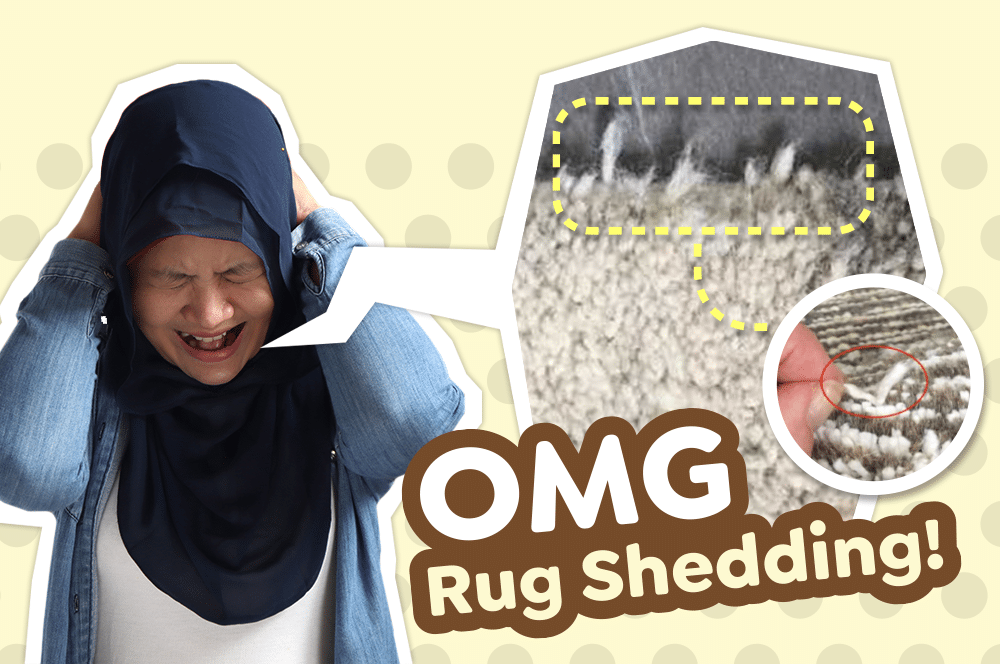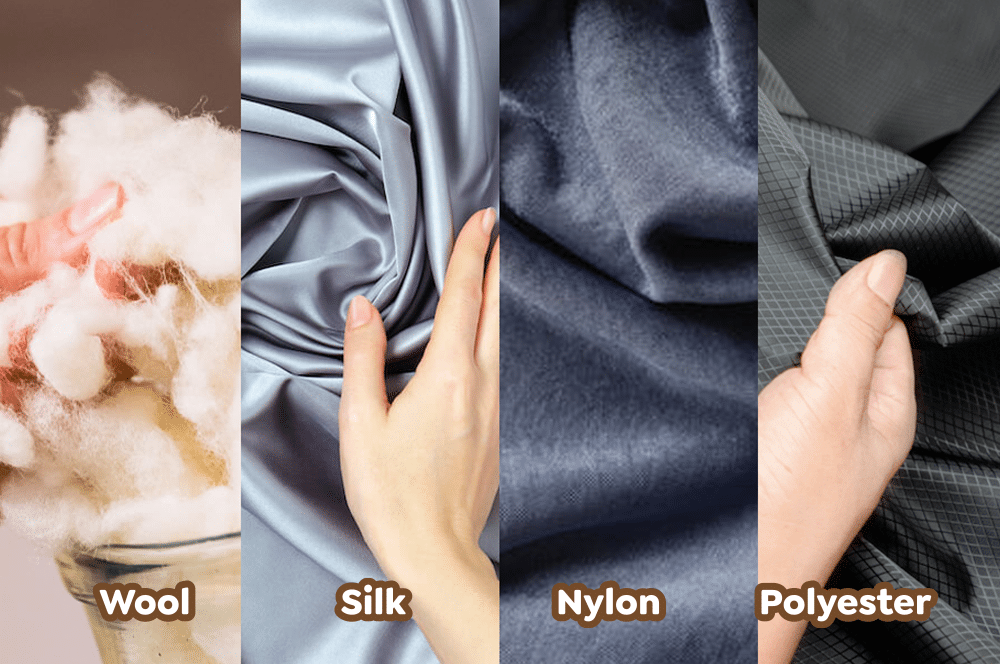
Rug shedding can be a frustrating issue, leaving unsightly fibres all over your home. Whether it is a new rug that’s shedding excessively or an old favourite that just won’t stop, knowing how to address this problem can save you time and effort in maintaining a clean and cosy living space.
In this article, we’ll share 5 effective tips to help you stop rug shedding. From understanding the causes of shedding to implementing practical solutions, our expert advice will ensure your rugs stay beautiful and your floors stay clean.
Understanding the Situation is Crucial to Stop Rug Shedding
Have you been wondering why your rug keeps shedding despite your constant sweeping? This isn’t just a problem at your home but also when you visit other people’s houses.
Rug shedding is a common occurrence in rugs made from both natural and synthetic fibers. It involves the release of loose fibres from the surface of the rug, leading to messiness and a decrease in overall appearance.
To effectively stop rug shedding, it’s crucial to first understand the underlying causes. By identifying why your rug is shedding, you can implement the right solutions to keep your rug looking pristine. Let’s explore the common reasons behind rug shedding and how to address them effectively.
3 Common Causes of Rug Shedding
1. Fibre Type
The type of fibre used in a rug significantly affects its shedding tendencies. Natural fibres like wool or cotton tend to shed more initially compared to synthetic fibres such as nylon or polypropylene. This shedding is often due to shorter fibres that weren’t fully secured during the manufacturing process. Over time, regular vacuuming and maintenance can reduce shedding as these loose fibres are removed.
2. Quality of Rug Construction

The construction method of a rug greatly influences its shedding patterns. High-quality rugs, such as handmade ones, usually feature denser weaves and tighter knots, ensuring the fibres are securely held in place. Conversely, lower-quality, machine-made rugs often have looser knots and less dense weaves, causing more fibres to become loose and shed.
3. Age and Usage
As rugs age and are regularly used, they naturally undergo wear and tear. New rugs often shed more during their initial period as loose fibres work their way out. Additionally, older rugs that have not been properly maintained or cleaned may shed more due to accumulated dirt and debris that weaken the fibres.
Areas with high foot traffic may experience increased shedding over time due to constant friction, which causes fibres to loosen and shed more frequently. That’s why it’s important to choose suitable rugs for high-traffic areas like the living room.
Furthermore, if you have pets, you may not be able to stop rug shedding completely, as pets can contribute to wear and tear by scratching the rugs. Thus, choosing a suitable rug or carpet becomes crucial to enhance durability. Read more about selecting the best carpet for pets.
5 Strategies to Stop Rug Shedding
Now that we understand the main causes of rug shedding, let’s explore some effective strategies to help prevent it. Here are 5 key approaches to stop rug shedding:
1. Choose Low-Shedding Fibres

Selecting rugs made from low-shedding fibres can significantly reduce the amount of loose fibres in your home. Natural fibres such as wool and silk, as well as synthetic fibres like nylon and polyester, tend to shed less than other materials. In addition, rugs crafted from a combination of natural and synthetic fibres enhance durability and lessen shedding.
Therefore, when shopping for a rug, remember to ask about the shedding properties of the fibres to make an informed decision. This approach is beneficial for early prevention, ensuring you select materials that maintain minimal shedding over time.
2. Invest in High-Quality Rugs
Higher-quality rugs are typically constructed with denser weaves and tighter knots, which secure the fibres more effectively and reduce shedding. Handmade rugs, in particular, are known for their durability and low-shedding properties. While they may be more expensive, investing in a high-quality rug can save you time and effort in maintenance.
If you’re concerned about budget constraints, rest assured—we have alternative strategies that are suitable for everyone.
3. Vacuum Regularly – Crucial Step to Stop Rug Shedding

Regular vacuuming is essential for preventing rug shedding. Use a vacuum cleaner with a gentle brush attachment to remove loose fibres from the surface without causing damage. Vacuuming both sides of the rug can help dislodge and remove fibres trapped within the weave.
To ensure the effectiveness of this strategy, aim to vacuum at least once a week, or more frequently in high-traffic areas. This approach is practical regardless of budget constraints.
4. Control Humidity Levels
Did you know that excessive humidity can cause natural fibres to swell and loosen, leading to increased shedding?
Maintaining proper humidity levels in your home can help preserve the strength of rug fibres. To address this issue, consider using a dehumidifier in damp areas and ensuring good ventilation throughout your home to regulate humidity levels effectively.
5. Send to Professional Cleaning
If you’re unsure how to stop rug shedding, seeking professional advice can be beneficial. Sending your rugs to professional cleaning services like Big Mama can effectively remove dirt, debris, and loose fibres, thereby reducing shedding and prolonging their lifespan. The professionals at Big Mama are equipped with the expertise and tools necessary for deep cleaning rugs without risking damage.
Regular professional cleaning is recommended—ideally annually or more frequently for high-traffic areas—to preserve your rugs’ condition and appearance. By entrusting your rugs to experts like Big Mama, you ensure they receive thorough care that enhances their longevity and keeps them looking their best.